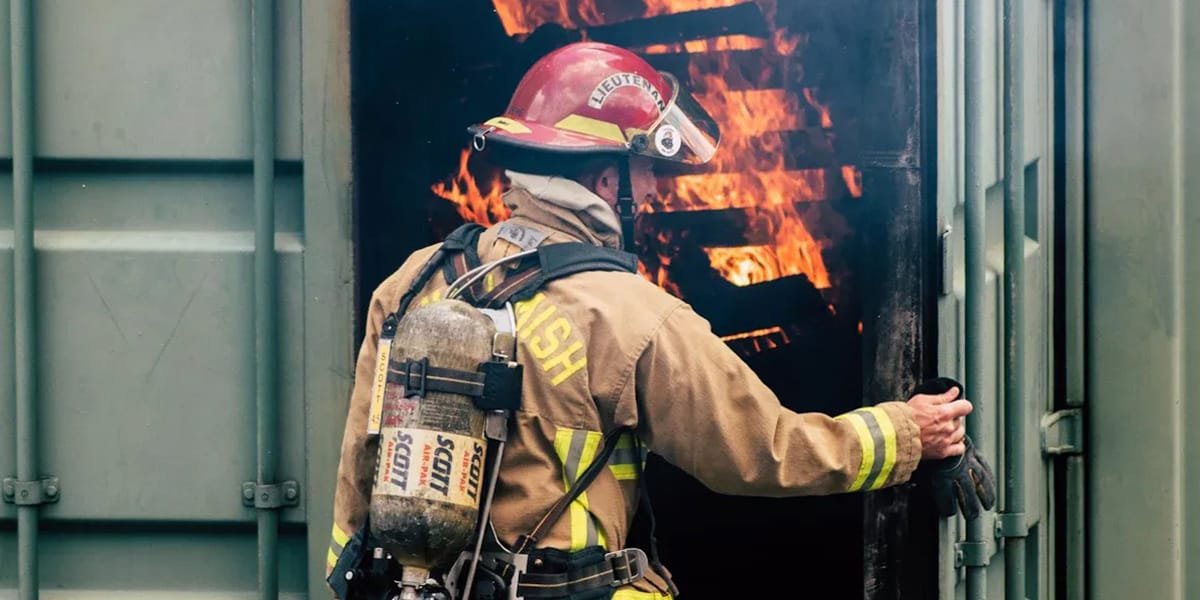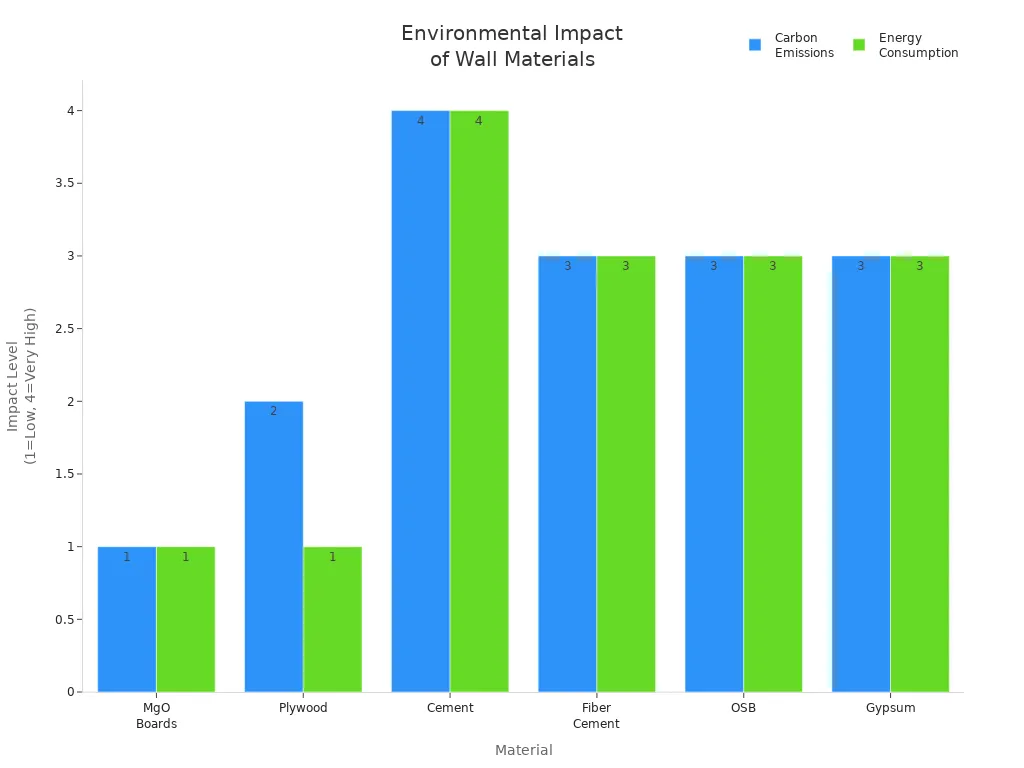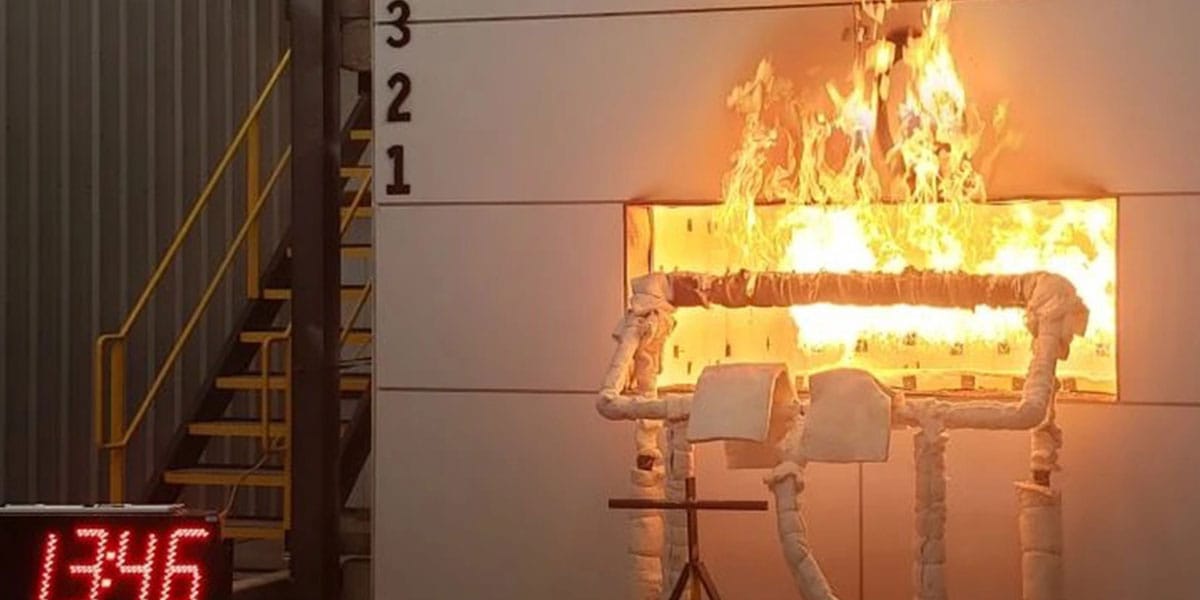
22 Aug What Makes Magnesium Wall Boards Highly Resistant to Extreme Heat
Table of Contents
Magnesium wall boards offer excellent high-temperature resistance, allowing them to withstand very high heat better than many other building materials. Unlike wood panels and gypsum, which are less durable under heat, magnesium boards contain magnesium oxide and magnesium chloride. These compounds provide a surface that resists burning. Magnesium boards do not catch fire or produce dangerous smoke. Manufacturers design these panels specifically for high-temperature resistance, ensuring they maintain their shape and quality even under intense heat. Magnesium oxide boards carry a Class A fire rating, demonstrating their effectiveness in fire situations. Builders choose MGO boards for their safety, strength, and superior high-temperature resistance. Magnesium boards clearly outperform other types of boards.
Key features of magnesium boards include:
High-temperature resistance
Does not produce dangerous smoke
Maintains strength in fire
Key Takeaways
Magnesium wall boards can handle very high heat. They do not burn or make dangerous smoke. These boards stay strong during fires. They keep their shape and help make buildings safer. Magnesium boards are better than gypsum, cement, and wood panels. They are better in fire resistance and strength. They do not get damaged by water, mold, or pests. This helps buildings last longer and stay safe. Builders use magnesium boards in places with high fire risk. They use them to protect people and follow fire safety rules.
High-Temperature Resistance of MgO Board

Chemical Structure
Magnesium boards can handle very high heat because of their special chemical structure. Scientists use tests like X-ray Diffraction and Thermo-gravimetric Analysis to look at what is inside magnesium oxide boards. These tests show that magnesium oxide mixes with water during making, which forms magnesium hydroxide. This makes the board stronger and ready for hot conditions. When there is fire, magnesium hydroxide lets out water vapor. This cools the board’s surface and slows down the flames. Other things like magnesium chloride, perlite, and fiberglass mesh make the board even stronger and better at stopping fire. The table below shows what scientists found in their studies:
Scientific Method | Findings Related to Chemical Structure and Heat Resistance |
|---|---|
X-ray Diffraction (XRD) | Showed how MgO changes into magnesium hydroxide (Mg(OH)₂) when it gets wet, proving the board’s structure changes. |
Thermo-gravimetric Analysis (TGA) | Measured how much more Mg(OH)₂ is made over time, showing why the board can handle heat. |
SEM/EDS | Gave close-up details about the board’s particles and helped explain why it is strong. |
These chemical changes help magnesium boards stop fire and keep their quality when it gets very hot. The way magnesium oxide boards are made helps them work well in fires.
Melting Point and Heat Tolerance
Magnesium boards can take a lot of heat before melting, so they are great for buildings that need to be safe from fire. Magnesium oxide melts at about 2800°C. MgO board can handle heat up to 1200°C without losing its shape or strength. Lab tests show that magnesium boards do not melt or fall apart at these high temperatures. ASTM E84 tests show that flames do not move across the board’s surface. ASTM E119 tests prove that fire-resistant MgO boards stay strong for up to 2 hours if they are 12mm thick. European rules give magnesium boards an A1 rating, which is the best for fire safety. Here are some important results from lab tests:
Magnesium oxide board can take heat up to 1200°C.
MgO board gets a zero flame spread in ASTM E84 tests.
Fire-resistant MgO boards stay strong for 2 hours in high heat.
EN 13501-1+A1:2010 gives magnesium boards an A1 non-combustible rating.
MgO board does not give off bad fumes when there is a fire.
Magnesium boards are strong and do not get weak from water.
Magnesium boards use their heat resistance and fire-stopping power to keep buildings and people safe during fires.
Fire Ratings
Magnesium boards pass tough fire safety tests all over the world. Groups test and approve magnesium oxide boards for stopping fire and keeping people safe. The table below lists fire safety ratings and certifications:
Board Type | Standard(s) | Fire Resistance Rating / Classification | Additional Certification / Notes |
|---|---|---|---|
Standard Magnesium Oxide | GB 8624 (China) / EN 13501-1 (EU) | A1 (highest fire rating) | ILAC-MRA certified test reports recognized internationally |
Standard Magnesium Oxide | GB/T 9978.1-2008 (China) / ISO 834-1-1999 | 90 minutes fire resistance duration | ILAC-MRA certified test reports recognized internationally |
Fire Door Core Foam Boards | AS 1530.1.1994 / ASNZS 1530.3.1999 (Australia) | Classified as non-combustible materials | Australian standards based testing confirming non-combustibility |
Magnesium boards also meet rules like ASTM E136 for not burning and ASTM E84 for stopping flames from spreading. Canadian rules like CAN/ULC S114 and ULC S135 show that magnesium boards are safe for walls and outside use. Magnesium boards get grades for use inside, outside, for building support, and for stopping fire. Fire-resistant MgO boards give strong protection in buildings that need to be safe from fire.
Magnesium boards do not let out harmful fumes when there is a fire. They are certified under EN ISO 1716 and EN 13501, and get an A1 Fire Rating and a 0/0 score for flame spread and smoke. When there is fire, magnesium boards let out water vapor, which cools the fire and stops dangerous gases. The natural parts of magnesium boards help keep people safe in buildings.
New ways to make magnesium oxide boards have made them even better at stopping fire and lasting longer. New methods help magnesium boards stop fire for up to 4 hours, lower heat during fires, and cost less to make. Eco-friendly ways to make them also help the environment and make them good for green buildings.
Magnesium boards mix high heat resistance, fire-stopping power, and top fire safety ratings to give great protection and quality in building projects.
Fire Resistance Compared to Other Materials
 Magnesium Oxide Board vs. Gypsum
Magnesium Oxide Board vs. Gypsum
Magnesium panels are much better at stopping fire than gypsum panels. Magnesium boards do not burn at all. Gypsum panels can catch fire and make smoke. Magnesium panels block flames and handle high heat. They do not let out bad fumes. Gypsum panels slow fire by letting out water vapor from inside. But they still lose shape and size in fire tests. The table below shows how magnesium oxide boards and gypsum panels are different:
Property/Aspect | Magnesium Oxide (MgO) Board | Gypsum Board |
|---|---|---|
Combustibility | Does not burn; non-combustible | Can burn; emits smoke |
Fire Resistance Mechanism | Blocks flames; withstands high heat; no toxic fumes | Releases water vapor from calcium sulfate dihydrate core to slow fire spread |
Mass Loss in Fire Tests | Approximately 50% mass loss after prolonged heat | Approximately 24% mass loss |
Physical Changes in Fire | May shrink or change shape after ~30 minutes heat | Retains shape longer during fire |
Fire Safety Application | Preferred for non-burning, flame-blocking needs | Preferred where less physical damage is desired |
Magnesium boards are safer for buildings. They help slow down fire and keep people safe.
MgO Board vs. Cement Board
MgO board panels stop fire better than cement panels. Magnesium panels can take heat up to 1200°C. This makes them good for places where fire is a big risk. Builders use magnesium boards in walls, ceilings, and room dividers that need to stop fire. Cement panels can resist fire but not as well as magnesium boards. Magnesium panels are also stronger and last longer. They do not get ruined by water, rot, mold, or mildew like cement panels. This helps magnesium boards work well in tough places.
Tip: Magnesium panels are best for places that need strong fire protection and long-lasting safety.
MgO Board vs. Wood Panels
Magnesium panels are much better than wood panels at stopping fire. Wood panels burn fast and help fire move. Magnesium boards do not burn and block flames. They keep their shape and do not make dangerous smoke. Wood panels lose strength and shape in high heat. Magnesium boards stay strong and keep people safe. Builders pick magnesium panels for safety and fire protection.
Magnesium panels are the best for fire resistance, safety, and strength. They slow fire and protect buildings better than gypsum, cement, or wood panels.
Benefits of Fire-Resistant MgO Boards
Building Safety
Magnesium oxide boards help keep buildings safe in many ways. Builders pick these panels because they stop fire and do not burn. Magnesium boards do not make toxic smoke, so people are safer during a fire. They also do not let water in, so there is no rot or mold. This makes them good for places with lots of moisture. Magnesium boards are stronger than drywall. Builders can use thinner panels and still be safe. These panels are tough and block sound, so buildings are quieter and stronger. Magnesium boards also keep bugs and pests out, which helps buildings last longer. Many important places like hospitals, theaters, airports, and apartments use magnesium boards for fire safety.
Magnesium boards slow down heat and stay strong in fires. Tests on steel walls show that these boards help stop buildings from falling apart in a fire.
Application Area | Benefit of MgO Board | Fire Safety Impact |
|---|---|---|
Lightweight, strong, fireproof | Protects entryways from fire | |
Partition Walls | Blocks fire and sound | Creates safe zones to contain fire spread |
Complex Projects | Custom fire barrier solutions | Meets strict fire safety codes and standards |
Health and Indoor Air Quality
Magnesium boards help people stay healthy and breathe clean air. These panels do not have bad chemicals like formaldehyde or asbestos. When there is a fire, magnesium boards do not let out dangerous fumes or VOCs. They do not let water in, so mold and mildew cannot grow. This keeps the air inside clean and safe. Magnesium boards do not break apart in high heat like drywall does. This helps keep the air clean during and after a fire. Builders use magnesium boards to make safer and healthier places for everyone.
Applications in High-Risk Areas
Magnesium boards work well in places where fire is a big risk. Builders put these panels in kitchens, boiler rooms, and electrical rooms. Magnesium boards are used for fireproof doors, walls, and smoke barriers. Their strong core and high fire rating make them great for fire walls and ceilings. Magnesium boards do not change shape when it is hot or wet. In busy buildings and factories, magnesium boards stay strong and last a long time. Special uses include insulated panels and fire walls, which are needed in places with lots of fire danger.
Magnesium boards keep heat in and help save energy.
These panels block noise, so rooms are quieter.
Magnesium boards are good for the earth, made from natural things, and can be recycled.

Magnesium boards are fire resistant, do not let in water, and last a long time. They are better than old wall materials for fire safety, health, and the environment. This makes them a smart choice for new buildings.
Magnesium wall boards can handle very high heat. Their special chemical structure and high melting point help with this.
These boards are safer and last longer than gypsum, cement, or wood.
Builders use magnesium boards because they protect well and last a long time.
Magnesium wall boards are the top pick for fire-safe buildings. They are safe and work well in homes, schools, and businesses.
FAQ
What makes magnesium wall boards different from regular drywall?
Magnesium wall boards use magnesium oxide, which does not burn. Regular drywall uses gypsum, which can break down in fire. Magnesium boards stay strong and do not make smoke. Builders choose them for better fire safety.
Can magnesium wall boards be used in wet areas?
Yes, magnesium wall boards resist water. They do not rot, swell, or grow mold. Builders use them in bathrooms, kitchens, and basements. These boards keep their strength even when wet.
Do magnesium wall boards release toxic fumes during a fire?
No, magnesium wall boards do not release toxic fumes. They give off water vapor when heated. This helps cool the fire and keeps the air safer for people.
Are magnesium wall boards easy to install?
Yes, workers can cut and install magnesium wall boards with standard tools. The boards are lightweight and easy to handle. Builders can use screws or nails to attach them to walls or ceilings.
Are magnesium wall boards environmentally friendly?
Magnesium wall boards use natural minerals and can be recycled. They do not contain harmful chemicals. Many builders pick them for green building projects because they help protect the environment.

 Magnesium Oxide Board vs. Gypsum
Magnesium Oxide Board vs. Gypsum